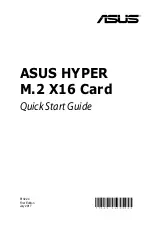
User’s Guide TCO
7
7. Operation and Usage
7.1 TCO-FF
After installation of the TCO the Fireface 800 has to be updated to the latest driver and firmware
versions, found on the website
www.rme-audio.com
in the section Download.
After reboot the Settings dialog includes an additional page TCO, and on the main page the
new sync-option TCO can be selected.
For synchronization to a video or LTC signal choose
Clock Mode
AutoSync and TCO as
Pre-
ferred Sync Ref
on the main page of the settings dialog. All further settings are done on the
TCO page.
LTC In:
The time values read from the LTC signal. These values are passed unchanged to the
application.
Input State:
An LTC input signal detection as valid (valid) is followed by the display of the num-
ber of frames per second, and whether this is Full Frame or Drop Frame code. A valid video
signal is shown as PAL or NTSC. An incoming word clock signal is analyzed and displayed to
be in the Single Speed, Double Speed or Quad Speed range.
Sync Source:
Input select switch for the
inputs LTC and video.
Lock
is displayed as
soon as the TCO is able to synchronize on an
input signal.
Video Input:
The BNC input can be
terminated with 75 Ohms.
Frame Rate:
The frame rate of the incoming
SMPTE signal must always be defined
manually.
Sample Rate:
The TCO derives a word clock
of 44.1 kHz or 48 kHz from the sync-signal. In
the setting 'from App' the value sent from the
ASIO application to the driver is used. The
lower field provides common Pull-Up and Pull-
Down values. The final value of the previously
defined sample rate is shown in the field
Fre-
quency
in case the sync-signal is valid.
Frequency:
The TCO measures the word
clock that it generates and shows the current
value in this field.
MIDI Input:
The Fireface's MIDI input
includes either the MTC signal of the TCO, or
the MIDI data of the 5-pin DIN input (External).





























